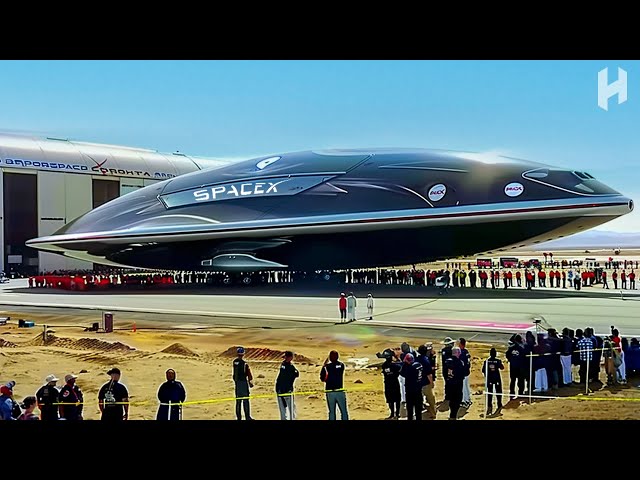BREAKING: Elon Musk Unveils Supersonic Space Jet That’s Rewriting the Rules of Physics! “This Changes Everything,” He Says
In a jaw-dropping announcement that’s setting the aerospace world ablaze, Elon Musk has just pulled back the curtain on SpaceX’s most radical creation yet: a supersonic space jet that defies conventional engineering, challenges the limits of current propulsion science—and could very well become the foundation of interplanetary travel.
 The “StarRaptor” — A Supersonic Revolution
The “StarRaptor” — A Supersonic Revolution
Dubbed the “StarRaptor”, this next-gen spacecraft is not a rocket, but not a plane either—it’s a hybrid aerospace vehicle capable of horizontal atmospheric flight, suborbital leaps, and Earth-to-orbit missions in record-breaking time.
“We’ve crossed a line—this machine doesn’t just fly, it surges through space and air at Mach speeds using a propulsion system that hasn’t existed until now,” Musk declared at the unveiling event at SpaceX’s Starbase facility. Tech That’s Beyond Sci-Fi
The StarRaptor is powered by a fusion-assisted ramjet engine, combined with magnetoplasma boosters—a system SpaceX engineers have been quietly developing under the code name “Phoenix Drive.”
Key breakthroughs include:
- Mach 12+ speeds (14,800 km/h or 9,200 mph) within Earth’s atmosphere
- Zero-to-orbit transition in under 5 minutes
- Reusable hybrid shielding that adapts to thermal stress in real time
- AI-piloted navigation with Neuralink co-integration
- Capability to land on both planets and moons without reconfiguration
Musk claims the vehicle can travel from New York to Tokyo in under 30 minutes, or launch from Earth and reach the Moon in 3 hours.
Interplanetary Travel—Finally Feels Real

During the presentation, Musk hinted that StarRaptor could serve as the prototype for rapid Mars missions, drastically reducing the time needed for crewed flights and cargo deployment:
“Forget waiting six months to reach Mars. With this craft, we’re talking weeks. And someday—days.”
He also teased a future where space tourism would involve “a quick jump to low orbit and back before lunch.”
What Makes It Possible?
Engineers say the StarRaptor combines ion propulsion principles with dark plasma acceleration chambers—technology previously dismissed as impossible outside of theory. A newly developed material called Flexium-9 allows the body of the craft to flex under supersonic stress, while remaining heat-resistant and shock-absorbent.
And the biggest leap? Artificial intelligence pilots the entire flight profile, learning in real time from gravitational fluctuations, magnetic field variations, and interstellar conditions.
The World Reacts
- NASA issued a statement of “amazement and support”
- The Chinese and European space agencies requested immediate briefings
- Twitter (X) exploded, with hashtags like #StarRaptor, #PhysicsRedefined, and #ElonDoesItAgain trending globally
Too Good to Be True?

Skeptics have called for peer-reviewed validation, while military analysts wonder whether this is just a transportation tool—or a strategic aerospace weapon in disguise. Musk laughed off those concerns, saying:
“No lasers, no missiles. Just speed. Just science. Just
future.”
What’s Next?
Musk confirmed that test flights begin Q4 this year, with human onboard missions projected by 2027. He also suggested StarRaptor 2 is already in development—rumored to include anti-gravity vectoring and silent propulsion.